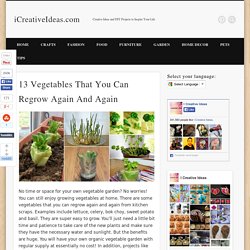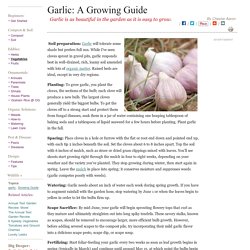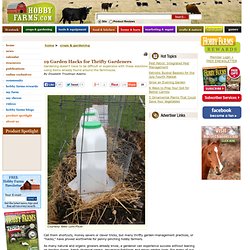

Growing Fruit in Pots. Related: Container Gardening Strawberries These herbaceous perennials are highly productive and delicious.

Catalogs separate strawberries into four groups: June-bearing varieties yield one large crop, ripening in late spring or early summer, depending on the climate. Their all-at-once nature makes June-bearers the preferred choice of those who wish to process the harvest for storage, but less desirable for container gardeners wanting a steady stream of fresh fruits. Everbearing are the most heat-tolerant type, with two crops—one in June and a smaller crop later in summer. Day-neutrals provide multiple flushes of berries from late spring until early autumn. Pot: An 18-inch-wide weatherproof container can accommodate 10 to 12 plants; two can accommodate the 25-plant bunches typically sold.
Soil: Strawberries demand excellent drainage—their crowns rot in wet soil. Light: Place containers where they receive at least 8 hours of direct sunlight a day. Related: Strawberry Growing Guide. Grow 100 lbs. Of Potatoes In 4 Square Feet: {How To} Quite the clever gardening tip here folks!

The 10 Best Indoor Herbs. No Garden? Here Are 66 Things You Can Grow At Home In Containers. DIY Pyramid Garden. 90 Pounds of Tomatoes from 5 Plants. At the lumberyard, I bought 7 feet of heavy wire fencing about 6 feet high.

I had the clerk cut a 3-foot length of small-mesh hardware cloth that stood about 30 inches high. I lapped the hardware cloth into a circle about 11 inches wide and secured it by threading wire over the edges. Then I set this circular basket in the middle of my fertilized plot and filled it to the brim with compost. The larger, 27-inch circle of heavy wire was placed around this center and firmly anchored with soil heaped a few inches around the base.
Next, I planted five tomato seedlings around the outside of the heavy wire circle. How To Save Tomato Seeds About 90 days after setting out the seedlings, I gathered 2 pounds of sun-ripened tomatoes. How to Grow Carrots from Seed. 13 Vegetables That You Can Regrow Again And Again. No time or space for your own vegetable garden?

No worries! You can still enjoy growing vegetables at home. There are some vegetables that you can regrow again and again from kitchen scraps. Examples include lettuce, celery, bok choy, sweet potato and basil. They are super easy to grow. Carrots: A Growing Guide. Orange carrots are the traditional standard, but you can try growing white, yellow, crimson, or even purple-skinned carrots, too.

More important than color, though, is choosing the right root size and shape to suit your soil. Carrot size and shape varies by type, and there are five major categories. How to Make Your Own Coldframe: Organic Gardening. A coldframe—simply an enclosed area with a clear top to let in sunlight—is one of the easiest ways to extend your growing and harvest season.

10 légumes qu'on peut faire repousser - Vite une recette. Saviez-vous qu’il était possible de faire repousser à l’intérieur plusieurs légumes et fines herbes à partir des restes que vous avez?

En plus d’être économique et pratique, c’est un beau projet à tenter, surtout avec les enfants, qui seront ravis de voir les résultats! Voici 10 légumes que vous pouvez faire pousser à nouveau, question d’avoir de bons produits frais toute l’année! Note : Certains de ces légumes, par exemple les oignons verts, s’accommoderont très bien de rester dans l’eau, à condition de changer celle-ci souvent… Par contre, d’autres plus substantiels comme le céleri, le fenouil, le bok choi etc. auraient avantage à être plantés en terre une fois qu’ils sont bien « repartis ». Hydroponics, greenhouses, water . . How to Grow Garlic: Organic Gardening. Soil preparation: Garlic will tolerate some shade but prefers full sun.

While I've seen cloves sprout in gravel pits, garlic responds best in well-drained, rich, loamy soil amended with lots of organic matter. Raised beds are ideal, except in very dry regions. Planting: To grow garlic, you plant the cloves, the sections of the bulb; each clove will produce a new bulb. The largest cloves generally yield the biggest bulbs.
Ask Organic Gardening: Vegetables in Pots: Organic Gardening. In a tropical climate—or even in the summer months in the temperate South—light-colored containers are important to keep temperatures in the root zone from getting too hot.

If you garden where summers tend to be cool, using darker-hued planters can be helpful for growing tomatoes and other crops that prefer to sink their roots into warm soil. Pay attention to drainage and durability when selecting containers, Hirvela advises. Choose pots that have drainage holes in them or be prepared to add holes to let excess water drain out. 19 Garden Hacks for Thrifty Gardeners. Call them shortcuts, money savers or clever tricks, but many thrifty garden-management practices, or "hacks,” have proved worthwhile for penny-pinching hobby farmers.

As many natural and organic growers already know, a gardener can experience success without leaning on big-box stores, harsh chemical sprays, pre-mixed fertilizers and pricey garden tools. For many of our parents and grandparents, remedies for garden challenges, such as pest repellants or fertilizers, originated from household staples and repurposed everyday items. While these garden hacks can save you money and a trip to the store, they can also provide a more natural approach to gardening that many growers—and eaters—desire. Seed Starting Sometimes the beginning of gardening season can seem the most overwhelming—and pricey! Take the pressure off the start of garden season with these easy hacks. Brew Compost Tea in 5 Easy Steps. Compost tea is a bubbling bucket of goodness for your garden, but don’t think of it as fertilizer.
It’s a dose of hard-working microbes that break down nutrients in the soil making them more available to the plants. "You’re taking microbes and multiplying them thousands of times, and adding those microbes to the soil,” says Donald Dukote, aka The Bayou Gardener, who has used compost tea in his Louisiana garden for over three years. Tad Hussey, manager and research director of Keep It Simple, Inc., which offers compost-tea brewing research and supplies, views compost tea as a piece of the puzzle in creating a healthy growing environment.
"When you put on organic fertilizer you’re feeding the microbes that make nutrients available,” he says. By adding more microbes to the soil through the compost tea, the entire process becomes more efficient. Beneficial bacteria prefer an environment rich in oxygen, Hussey points out. The Dirt on Gardening: 7 DIY Vertical Gardening Techniques for Healthier Veggies. Earlier this month, we talked about space-saving techniques for small gardens. In that same vein, you can also save space by gardening vertically. Vertical gardening not only leaves room to grow more of the veggies you love, it helps improve plant health and vigor and facilitates harvesting. Trellising, caging and staking plants—the three common methods of vertical gardening—are smart moves in the vegetable garden for many reasons. First and foremost, it prevents the plant’s foliage from contacting the soil.
The Best Rain Barrels for the Backyard Gardener: Organic Gardening. How to Customize Your Root Cellar Storage. If you’ve built a top-notch root cellar, you’ll want to build a top-notch storage system to keep your vegetables fresh and accessible. Because you can’t predict your harvest from year to year, build keep flexibility in mind. These building plans include ventilated shelves, drawers and bins to accommodate different types of produce, but you can customize them to fit your space and needs. 5 Steps to Get the Best Eggs Possible. Keep Your Garden Protected. The Dirt on Gardening: 7 DIY Vertical Gardening Techniques for Healthier Veggies. Soil: The Secret Weapon Against Climate Change: Organic Gardening. It’s a shame to quash the hope and high spirits of spring with bad news, but there it is: The U.S.
Global Change Research Program just released the Third National Climate Assessment, which concludes that climate change continues apace, that human activity drives it, and that it is already affecting every part of the country with drought, flood, and heat waves. But there is more good news, happening far away from reports and government agencies. Zone by zone to-do list for gardeners in May: Organic Gardening. Build a $300 underground greenhouse for year-round gardening. How to Build a Compost Bin with Straw Bales. Brew Compost Tea in 5 Easy Steps.